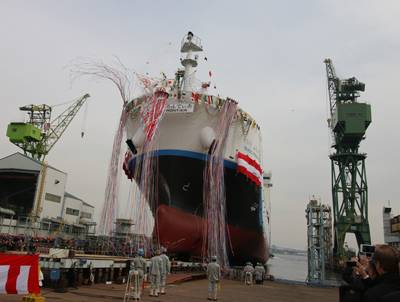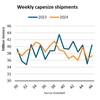Australian Government Highlights Nation’s Green Hydrogen Ambition
The Australian government has released its annual State of Hydrogen report, saying it reinforces that Australia has the foundations to become a global leader in green hydrogen.
The report illustrates local industry is advancing hydrogen as a chemical feedstock and for export to generate electricity, but there’s an urgent need to speed up priority pilot projects and hydrogen hubs to compete internationally.
In 2022, more than 100 Australian green hydrogen projects such as green ammonia and green methanol manufacturing were announced. This is more than double the projects announced in 2021.
Australia also has around 40% of all announced global hydrogen projects, with the Australian pipeline valued from A$230 billion to A$300 billion.
Minister for Climate Change and Energy Chris Bowen said: “By 2050, Australia’s hydrogen industry could generate $50 billion in additional GDP and create more than 16,000 jobs in regional Australia. We have a great opportunity for entire new industries from Townsville to Gladstone, the Hunter Valley, the Pilbara, Port Bonython and Bell Bay through hydrogen hubs.
"We know our trading partners are looking to us to supply Australian hydrogen, and our industrial base requires it. We will keep our foot on the accelerator to achieve the scale of industry development necessary to compete internationally.”
The Albanese Government is fast-tracking hydrogen investment through:
• investing over half a billion dollars to develop regional hydrogen hubs
• the German–Australian Hydrogen Innovation and Technology Incubator (HyGATE) initiative, the cost of green hydrogen production and support cutting-edge technology in the industry
• a memorandum of understanding with the Netherlands, advancing cooperation on a green hydrogen supply chain.
• critical investment opportunities through funding pools such as the Powering the Regions Fund, the National Reconstruction Fund, ARENA and the CEFC.
The Albanese Government is investing in green hydrogen and low-emissions steel with $50 million in research and development funding through two A$25 million rounds to be launched by the Australian Renewable Energy Agency (ARENA). A further $25 million will go to towards research to significantly reduce emissions across the steel value chain.
The Australian Petroleum Production & Exploration Association (APPEA) has the report, with APPEA Chief Executive Samantha McCulloch saying the gas sector would play a critical role in kick-starting low-emissions hydrogen.
“Natural gas combined with carbon capture, utilisation and storage (CCUS) is currently by far the most affordable pathway low-carbon hydrogen production – meaning significantly more emissions reductions per dollar today,” she said. “This paves the way for all low-carbon hydrogen pathways, enabling faster scale up to support economy-wide decarbonisation.” Under the International Energy Agency’s Net Zero by 2050 scenario, over a quarter of hydrogen in 2050 will come from natural gas utilising CCUS.
McCulloch continued: “Leveraging the most affordable low-carbon hydrogen pathways not only makes net zero more achievable but also minimises the impact on the costs of doing business for Australian manufacturers and industry as they align with our climate targets.”
In April 2022, a world-first pilot project successfully exported liquid hydrogen from Victoria to Japan. The pilot established a new hydrogen supply chain produced from brown coal and a mixture of biomass, which was then transported to the Port of Hastings for liquefaction, before being loaded onto the Suiso Frontier, purpose-built by Kawasaki Heavy Industries. The liquid hydrogen was then shipped to the Port of Kobe in Japan. It was the first time that liquefied hydrogen has been exported from one continent to another.
The Australia-Singapore Low Emissions Technologies for Maritime and Port Operations initiative aims to accelerate deployment of low emissions fuels and technologies like hydrogen to reduce emissions in maritime and port operations.












